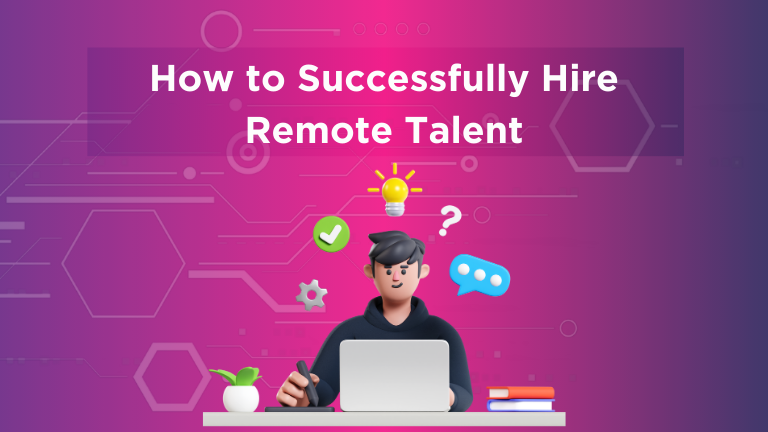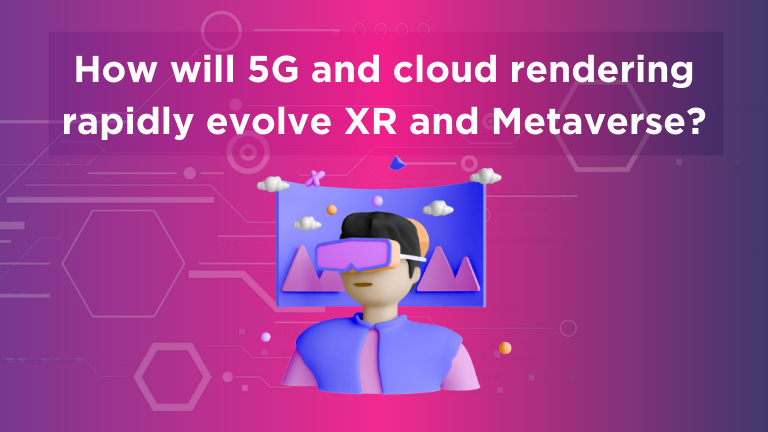What will hiring look like in Extended Reality?
For a few years now, Extended Reality or “XR”, has been growing increasingly valuable in the business and enterprise space.
Extended Reality has proven to be an effective tool for facilitating collaborative, educational, and inspirational experiences. There are even apps and tools built specifically to leverage the benefits of AR, MR, and VR at work.
As we move towards a future defined by immersive technologies and the “Metaverse”, many experts agree XR solutions will influence how teams work together. And how business leaders hire and onboard new employees.
XR’s ability to enhance the way we connect and share ideas is one of the main reasons why technology has grown so popular. Just as video conferencing opened the door to more flexible human meetings between distributed candidates and their employers, XR will create a new platform for engaging, testing, and evaluating potential hires.
Imagining Interviews in XR: Making Interviews Immersive
While conducting an interview in an XR environment might not be commonplace today, it’s likely to become increasingly popular. Increasingly, businesses are looking for ways to leave old-fashioned and out-of-date face-to-face interviews behind in favour of something more efficient.
Switching to video interviews has helped companies save significant time and even become more eco-friendly with their recruitment processes. Using digital tools to conduct interviews makes it easier to record valuable information. Business leaders can use this to assist them in making the right hiring decisions.
Unfortunately, video interviews have their limitations too. They lack the “presence” and engagement of real-world connections. Plus, there are restrictions on how much a hiring manager can test and evaluate when meeting someone via video. XR could help to bridge these gaps.
What Interviews will Look like using Augmented Reality
To fully visualize what job interviews might look like in the XR world, we need to consider all aspects of Extended Reality, starting with “Augmented Reality”. For most brands, an AR interview process will be the easiest way to get started with XR hiring.
It doesn’t require potential employees to have access to expensive headsets or hardware, as AR tools can usually work seamlessly with smartphones and tablets. Accessing AR via phone will benefit future recruitment teams, as around 9 out of 10 job seekers are already applying for roles using their mobile devices.
Already, AR applications allow candidates to send video messages to their potential employers where they can showcase their skills and list their abilities in front of a virtual background. For team members worried about the interview process, there are also 360-degree coaching apps available to help them prepare for the interview experience.
These tools allow candidates to build their confidence before an interview in a setting where they can see other people sitting in front of them through their phones.
What Interviews will Look like in Virtual Reality
Following AR innovations in the interview landscape, we also have several opportunities to explore the VR world. Already, companies have built virtual reality landscapes designed to provide candidates and employees with a virtual version of their office.
In a VR landscape, candidates can use avatars to represent themselves in a virtual world, complete with gestures. This brings a sense of presence to the general meeting, which may not be possible with video conferencing. Tools also exist to help users prepare for interviews in VR, with immersive environments where users can practice answering competency-based questions and responding to different challenges.
Companies may leverage VR to simultaneously introduce a potential employee to multiple staff members. They can use these landscapes to take candidates on a virtual office tour to prepare them for their work life. There’s even the option to create various tests and scenarios to determine how candidates might respond to certain situations.
In VR, candidates can demonstrate their skills in responding to customer inquiries, filling out forms, or interacting with other staff members.
What Interviews will Look like using Mixed Reality
For several reasons, mixed Reality is still a relatively untouched part of the XR landscape. Only a handful of vendors have begun experimenting with what this landscape could hold. Many experts believe Mixed Reality will introduce us to a future where we can have meetings and hold interviews with holographic versions of other human beings.
We’ve already seen examples of what this might look like from innovators like Microsoft, who shared a video capturing what the future of meetings might look like via Holograms:
While there’s a long way to go before holographic interviews are commonplace, innovations in the mixed-reality world are making this concept more of a possibility. Enhanced cloud storage solutions, 5G, and low latency connections make it easier to imagine a real-time future where we can stream high-definition holograms.
In the future, you may be able to simply “teleport” yourself into a business environment using a headset, so you can walk around an “office” from the comfort of your own home, and team members can interact with a holographic version of you.
The Benefits of Extended Reality in Interviews
XR in job interviews might still seem like a science-fiction concept to many. It’s becoming an increasingly realistic and valuable opportunity. With XR technology, companies can showcase their employer brand, culture, and workplace more effectively to candidates interested in filling a position.
XR solutions will empower business leaders to test candidate skills in various scenarios with gamified experiences that engage and delight potential team members. The right tools will even be able to gather data about a candidate’s spatial and reasoning skills in real-time. This will give business leaders more information to help them make the right hiring choices.
At the same time, XR has the potential to significantly improve the onboarding experience when it comes to welcoming new members of staff into the team. Using the same immersive environment created for an interview, companies can introduce staff members to the tools and spaces they’ll be interacting with when they start their roles.
XR tools can provide businesses with a way to provide immersive, hands-on training to team members working in challenging scenarios and improve the chances of rapidly integrating new talent into the company culture.
Unusual as it may seem, XR may be the future of the interviewing and hiring landscape.




